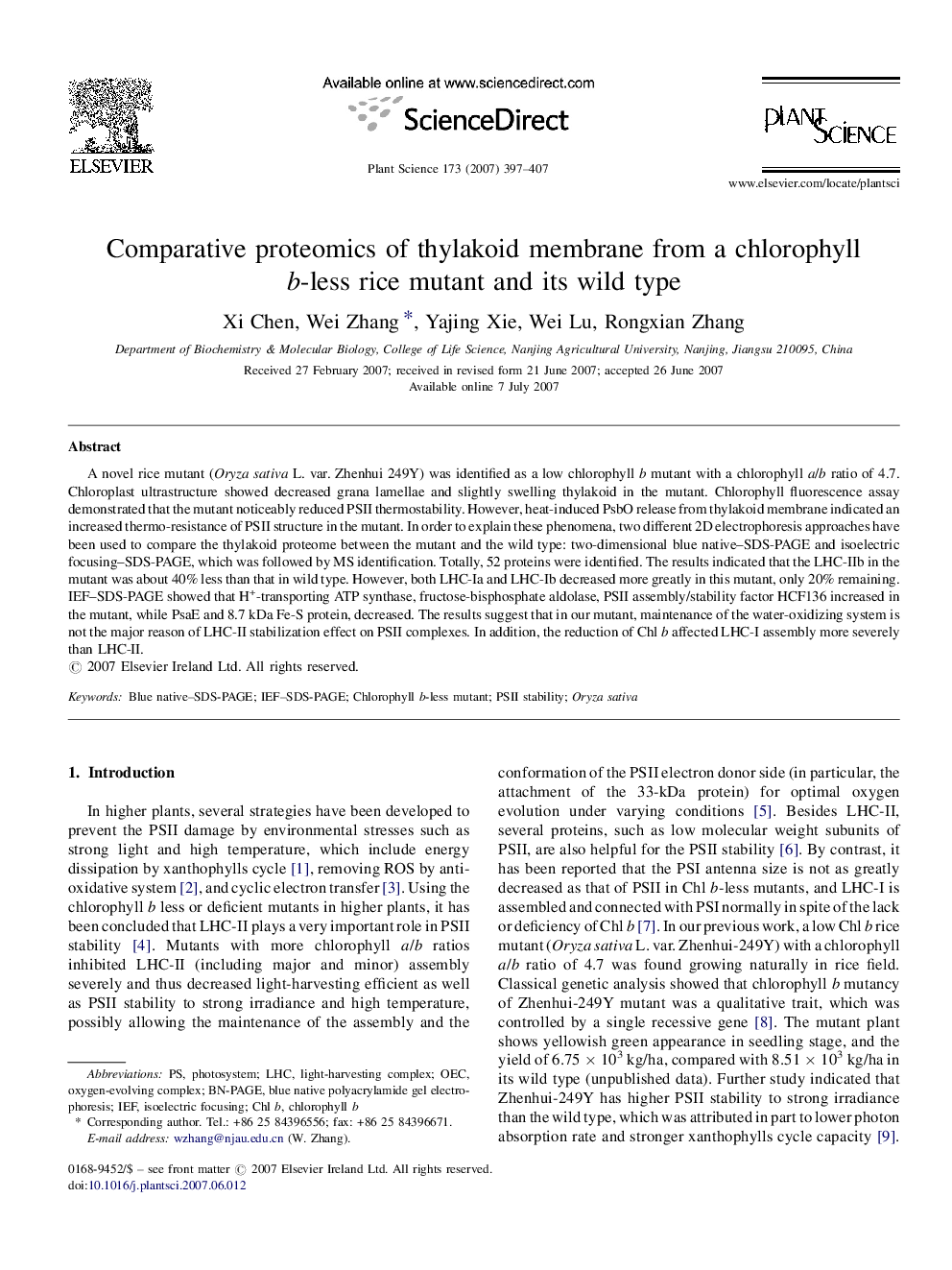| Article ID | Journal | Published Year | Pages | File Type |
|---|---|---|---|---|
| 2018676 | Plant Science | 2007 | 11 Pages |
A novel rice mutant (Oryza sativa L. var. Zhenhui 249Y) was identified as a low chlorophyll b mutant with a chlorophyll a/b ratio of 4.7. Chloroplast ultrastructure showed decreased grana lamellae and slightly swelling thylakoid in the mutant. Chlorophyll fluorescence assay demonstrated that the mutant noticeably reduced PSII thermostability. However, heat-induced PsbO release from thylakoid membrane indicated an increased thermo-resistance of PSII structure in the mutant. In order to explain these phenomena, two different 2D electrophoresis approaches have been used to compare the thylakoid proteome between the mutant and the wild type: two-dimensional blue native–SDS-PAGE and isoelectric focusing–SDS-PAGE, which was followed by MS identification. Totally, 52 proteins were identified. The results indicated that the LHC-IIb in the mutant was about 40% less than that in wild type. However, both LHC-Ia and LHC-Ib decreased more greatly in this mutant, only 20% remaining. IEF–SDS-PAGE showed that H+-transporting ATP synthase, fructose-bisphosphate aldolase, PSII assembly/stability factor HCF136 increased in the mutant, while PsaE and 8.7 kDa Fe-S protein, decreased. The results suggest that in our mutant, maintenance of the water-oxidizing system is not the major reason of LHC-II stabilization effect on PSII complexes. In addition, the reduction of Chl b affected LHC-I assembly more severely than LHC-II.
